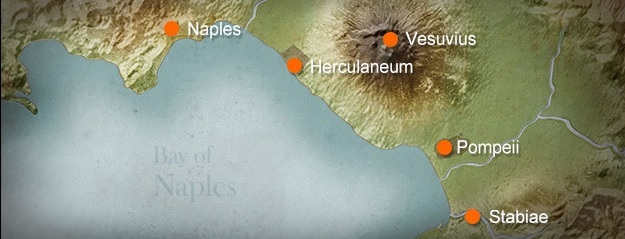An Introduction to Pompeii and Herculaneum
Sarah Chou and Stephanie Villafane
In the 18th century, the discoveries of Herculaneum and Pompeii, both originally destroyed by the eruption of Mount Vesuvius in 79 AD, prompted a revival in interest of classical antiquity. With the exceptions of scattered minor discoveries, the cities were long forgotten as a result of socio-political factors, most notably the invasions of neighboring civilizations, until their complete discovery in the 18th century. Unlike its more well known counterpart Pompeii, the excavation of Herculaneum unearthed a preserved city of wealth and grandeur, due to it being frozen under volcanic rock and other carbonated material. In the case of Pompeii, although some organic objects had been found, such as preserved eggs and loaves of bread from a bakery, the majority of organic materials were destroyed in the eruption. The 18th century was only the beginning of the excavation; such preservation of the city made it arduous for workers to discover more artifacts from Herculaneum, and attention was shifted towards Pompeii. Much of what is known about Herculaneum is the result of more recent discoveries and research in the latter part of the 19th century, and a majority of it remains undiscovered. Still, the discoveries of the Villa of the Papyri, the Theatre, and a plethora of other finds illuminated the 18th century impulse to study and possess antiquity. The discoveries made at Pompeii and Herculaneum in the 18th century not only shifted attention to the then developing field of archeology, but also inspired the art of this time period, and the thirst for more knowledge about the past can be seen through the works of many artists such as Giovanni Battista Piranesi and Joseph Wright of Derby. Pictured is a map of Pompeii, Herculaneum and Vesuvius from the British Museum.
SV and SC
___________
1. British Museum. “Map of Pompeii and Herculaneum." Accessed April 2017. http://www.britishmuseum.org/whats_on/exhibitions/pompeii_and_herculaneum/pompeii_live/eruption_timeline.aspx.
